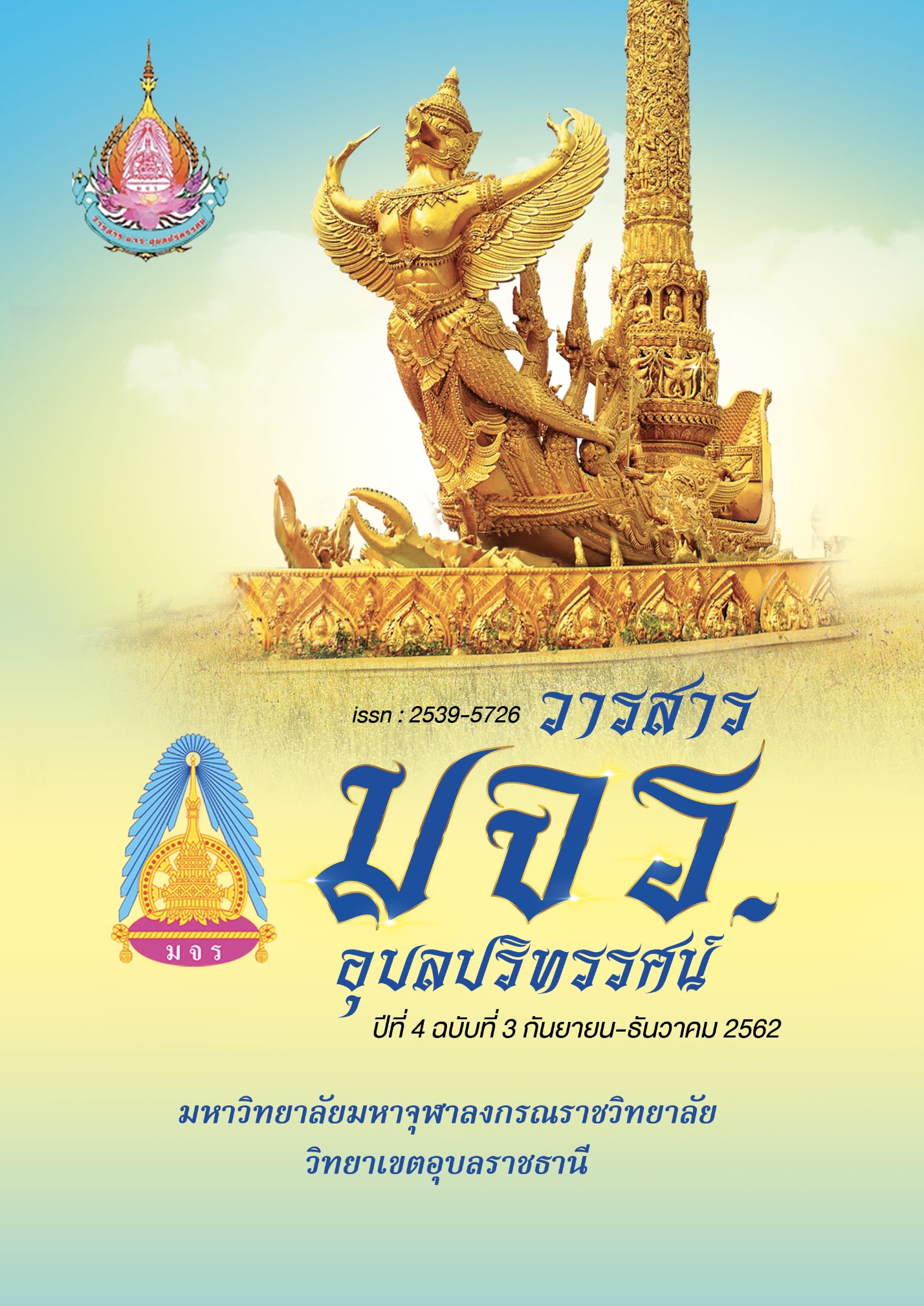A Study of Khmer Dialect Spoken in the Areas of Buriram, Surin and Sisaket Provinces
Main Article Content
Abstract
This article titled “A Study of Khmer Dialect Spoken in the Areas of Buriram, Surin and Sisaket Provinces” aims to: 1) study the Khmer dialect spoken in the areas of Buriram province, Surin province, and Sisaket province; and 2) survey the Khmer dialect speaking population in the areas of the three provinces. This research is a qualitative research by interviewing 30 Khmer dialect speaking informants from 3 villages in Sangkha district, Surin province; Prakhonchai district, Buriram province; and Khukhan district, Sisaket province. The data collected were analyzed in descriptive statements. The results of the study are as follows: Khmer dialect spoken in the areas of Buriram province, Surin province and Sisaket province includes twenty-one consonant phonemes and all of them can occur in the initial position of the meaningful syllable. They are /p/, /t/, /k/, /?/, /ph/, /th/, /kh/, /b/, /d/, /ʤ/, /ʤh/, /s/, /h/, /m/, /n/, /ɲ/, /ŋ/, /l/, /r/, /j/, /w/. Fourteen of them can occur as the final consonant. They are /p/, /t/, /k/, /?/, /ʤ/, /h/, /m/, /n/, /ɲ/, /ŋ/, /l/, /r/, /j/, /w/. There are eleven consonant clusters /pl/, /pr/, /tr/, /kl/, /kr/, /phl/, /khl/, /khw/, /bl/, /br/, /hl/. There are thirteen single short vowels: /i/, /ɩ/, /e/, /ɛ/, /ɯ/, /ə/, /ʌ/, /a/, /u/, /ɷ/, /o/, /ɔ/, /ɒ/ and fourteen single long vowels: /i:/, /ɩ:/, /e:/, /ɛ:/, /ɯ:/, /ɣ:/, /ə:/, /ʌ:/, /a:/, /u:/, /ɷ:/, /o:/, /ɔ:/, /ɒ:/. There are four diphthongs of one short and three long diphthongs: /iə/, /i:ə/, /ɯə/, /uə/. There are 2 types of syllable in Khmer dialect: major syllable and minor syllable. There are 2 classes of syllable: nuclear syllable and peripheral syllable. There are 2 kinds of morpheme, namely, free morpheme and bound morpheme, which are divided into two forms: 1) Simple forms or Mono-morphemic including two kinds: (1) Monosyllabic and (2) Polysyllabic; and 2) Compound forms or Poly-morphemic including four kinds: (1) Free compound forms; (2) Affixed compound forms; (3) Reduplicated compound forms; and (4) Rhyming compound forms. Moreover, it is found that Northern Khmer morpheme can be divided in parts of speech as the followings: (1) Substantives including Nouns, Pronouns, Classifiers, Quantifiers and Modifiers; (2) Verbs including Main verbs, Auxiliary verbs (3) Adverbs, (4) Adjectives, (5) Numerals, (6) Prepositions, (7) Determinatives, (8) Particles, (9) Linkers, (10) Markers, (11) Negation, (12) Reduplications, (13) Exclamation. Khmer dialect is in the Austro-Asiatic language family which is now divided into three groups including: Northern Khmer spoken in Thailand; Central Khmer spoken in Kampuchea; and Southern Khmer spoken in the South of Vietnam. Regarding the Khmer dialect of the three provinces, percentage of the population speaking the language includes: 50 percent in Sangkha district, Surin province; 40 percent in Prakhonchai district, Buriram province; and 30 percent in Khukhan district, Sisaket province. It is also found that parts of speech of all the three areas are in the same structure and they are different only in accent.
Article Details
References
(Prakhonchai District Buriram Province)”. M.A. Thesis in Linguistics,
Graduate School: Mahidol University.
Prakorb Phon-ngam.(1999) “A Morphological study of Northern Khmer”. A
Dissertation of Doctor of Philosophy in Linguistics.Graduate School:
Mahidol University.
______. (1991). “The Problem of aspirates in Central Khmer and Northern Khmer”. Paper Presented at the 24th International Conference on
Sino-Tibetan Languages and Linguistics at Ramkhamhaeng
University. Bangkok: Thailand.
Ruengdet P.(1976). “A Synchronic Comparative Study of Modern Thai and
Modern Lanna”. A Dissertation of Doctor of Philosophy in Linguistics.
Graduate School: Poona University,
______. (1987). “An introduction to Thai Syntax”. Bangkok: Mahidol University.
______. (2552), “Thai linguistics”. 2nd Edition. Bangkok: Fast Books Press.
Suriya Nakprat. (1991). “A descriptive study of the Buriram dialect of High
Khmer”. A Dissertation of Doctor of Philosophy in Linguistics. Graduate
School: Nagpur University, India.
Suwilai Premsrirat.“Phonetic variation of final trill and final palatals in
Khmer dialects of Thailand”.Mon-Khmer Studies. XXIV. (pp. 1-26). Summer Institute of Linguistics & Mahidol University, 1995.
______. (1997). “Linguistic contributions to the study of Northern Khmer
language Of Thailand in last Two decades”. Mon-Khmer Studies. XXII.
(pp. 119-127). Summer Institute of Linguistics & Mahidol University.
Thomas,David D.and Wanna Tienmee. (1982). “An Acoustic Study of Northern
Khmer Vowels”. Paper presented at the xvth International Conference
on Sino- Tibetan Languages and Linguistics, Benjing, china.
Wilaisak Kingkham. (1992). “A Comparative Study of Standard Thai and Tai-
Phake spoken in Assam (India)”. A Dissertation of Doctor of Philosophy
in Linguistics. Graduate School: Poona University


